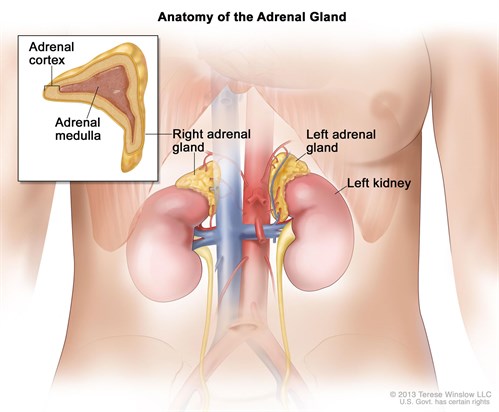Overview
Cerebral palsy is a disorder of movement, muscle tone or posture that is caused by damage that occurs to the immature, developing brain, most often before birth.
Signs and symptoms appear during infancy or preschool years. In general, cerebral palsy causes impaired movement associated with abnormal reflexes, floppiness or rigidity of the limbs and trunk, abnormal posture, involuntary movements, unsteady walking, or some combination of these.
People with cerebral palsy may have problems swallowing and commonly have eye muscle imbalance, in which the eyes don’t focus on the same object. People with cerebral palsy also may suffer reduced range of motion at various joints of their bodies due to muscle stiffness.
Cerebral palsy’s effect on functional abilities varies greatly. Some affected people can walk while others can’t. Some people show normal or near-normal intellectual capacity, but others may have intellectual disabilities. Epilepsy, blindness or deafness also may be present.

www.gtsmeditour.com
Symptoms
Signs and symptoms can vary greatly. Movement and coordination problems associated with cerebral palsy may include:
- Variations in muscle tone, such as being either too stiff or too floppy
- Stiff muscles and exaggerated reflexes (spasticity)
- Stiff muscles with normal reflexes (rigidity)
- Lack of muscle coordination (ataxia)
- Tremors or involuntary movements
- Slow, writhing movements (athetosis)
- Delays in reaching motor skills milestones, such as pushing up on arms, sitting up alone or crawling
- Favoring one side of the body, such as reaching with only one hand or dragging a leg while crawling
- Difficulty walking, such as walking on toes, a crouched gait, a scissors-like gait with knees crossing, a wide gait or an asymmetrical gait
- Excessive drooling or problems with swallowing
- Difficulty with sucking or eating
- Delays in speech development or difficulty speaking
- Difficulty with precise motions, such as picking up a crayon or spoon
- Seizures
The disability associated with cerebral palsy may be limited primarily to one limb or one side of the body, or it may affect the whole body. The brain disorder causing cerebral palsy doesn’t change with time, so the symptoms usually don’t worsen with age. However, muscle shortening and muscle rigidity may worsen if not treated aggressively.
Brain abnormalities associated with cerebral palsy also may contribute to other neurological problems. People with cerebral palsy may also have:
- Difficulty with vision and hearing
- Intellectual disabilities
- Seizures
- Abnormal touch or pain perceptions
- Oral diseases
- Mental health (psychiatric) conditions
- Urinary incontinence
Causes
Cerebral palsy is caused by an abnormality or disruption in brain development, usually before a child is born. In many cases, the exact trigger isn’t known. Factors that may lead to problems with brain development include:
- Mutations in genes that lead to abnormal brain development
- Maternal infections that affect the developing fetus
- Fetal stroke, a disruption of blood supply to the developing brain
- Infant infections that cause inflammation in or around the brain
- Traumatic head injury to an infant from a motor vehicle accident or fall
- Lack of oxygen to the brain (asphyxia) related to difficult labor or delivery, although birth-related asphyxia is much less commonly a cause than historically thought
Risk factors
A number of factors are associated with an increased risk of cerebral palsy.
Maternal health
Certain infections or health problems during pregnancy can significantly increase cerebral palsy risk to the baby. Infections of particular concern include:
- German measles (rubella). Rubella is a viral infection that can cause serious birth defects. It can be prevented with a vaccine.
- Chickenpox (varicella). Chickenpox is a contagious viral infection that causes itching and rashes, and it can cause pregnancy complications. It too can be prevented with a vaccine.
- Cytomegalovirus. Cytomegalovirus is a common virus that causes flu-like symptoms and may lead to birth defects if a mother experiences her first active infection during pregnancy.
- Herpes. Herpes infection can be passed from mother to child during pregnancy, affecting the womb and placenta. Inflammation triggered by infection may then damage the unborn baby’s developing nervous system.
- Toxoplasmosis. Toxoplasmosis is an infection caused by a parasite found in contaminated food, soil and the feces of infected cats.
- Syphilis. Syphilis is a sexually transmitted bacterial infection.
- Exposure to toxins. Exposure to toxins, such as methyl mercury, can increase the risk of birth defects.
- Zika virus infection. Infants for whom maternal Zika infection causes microcephaly can develop cerebral palsy.
- Other conditions. Other conditions may increase the risk of cerebral palsy, such as thyroid problems, intellectual disabilities or seizures.
Infant illness
Illnesses in a newborn baby that can greatly increase the risk of cerebral palsy include:
- Bacterial meningitis. This bacterial infection causes inflammation in the membranes surrounding the brain and spinal cord.
- Viral encephalitis. This viral infection similarly causes inflammation in the membranes surrounding the brain and spinal cord.
- Severe or untreated jaundice. Jaundice appears as a yellowing of the skin. The condition occurs when certain byproducts of “used” blood cells aren’t filtered from the bloodstream.
Other factors of pregnancy and birth
While the potential contribution from each is limited, additional pregnancy or birth factors associated with increased cerebral palsy risk include:
- Breech births. Babies with cerebral palsy are more likely to be in a feet-first position (breech presentation) at the beginning of labor rather than headfirst.
- Complicated labor and delivery. Babies who exhibit vascular or respiratory problems during labor and delivery may have existing brain damage or abnormalities.
- Low birth weight. Babies who weigh less than 5.5 pounds (2.5 kilograms) are at higher risk of developing cerebral palsy. This risk increases as birth weight drops.
- Multiple babies. Cerebral palsy risk increases with the number of babies sharing the uterus. If one or more of the babies die, the chance that the survivors may have cerebral palsy increases.
- Premature birth. A normal pregnancy lasts 40 weeks. Babies born fewer than 37 weeks into the pregnancy are at higher risk of cerebral palsy. The earlier a baby is born, the greater the cerebral palsy risk.
- Rh blood type incompatibility between mother and child. If a mother’s Rh blood type doesn’t match her baby’s, her immune system may not tolerate the developing baby’s blood type and her body may begin to produce antibodies to attack and kill her baby’s blood cells, which can cause brain damage.
Complications
Muscle weakness, muscle spasticity and coordination problems can contribute to a number of complications either during childhood or later during adulthood, including:
- Contracture. Contracture is muscle tissue shortening due to severe muscle tightening (spasticity). Contracture can inhibit bone growth, cause bones to bend, and result in joint deformities, dislocation or partial dislocation.
- Malnutrition. Swallowing or feeding problems can make it difficult for someone who has cerebral palsy, particularly an infant, to get enough nutrition. This may cause impaired growth and weaker bones. Some children may need a feeding tube for adequate nutrition.
- Mental health conditions. People with cerebral palsy may have mental health (psychiatric) conditions, such as depression. Social isolation and the challenges of coping with disabilities can contribute to depression.
- Lung disease. People with cerebral palsy may develop lung disease and breathing disorders.
- Neurological conditions. People with cerebral palsy may be more likely to develop movement disorders or worsened neurological symptoms over time.
- Osteoarthritis. Pressure on joints or abnormal alignment of joints from muscle spasticity may lead to the early onset of painful degenerative bone disease (osteoarthritis).
- Osteopenia. Fractures due to low bone density (osteopenia) can stem from several common factors such as lack of mobility, nutritional shortcomings and antiepileptic drug use.
- Eye muscle imbalance. This can affect visual fixation and tracking; an eye specialist should evaluate suspected imbalances.
Prevention
Most cases of cerebral palsy can’t be prevented, but you can lessen risks. If you’re pregnant or planning to become pregnant, you can take these steps to keep healthy and minimize pregnancy complications:
- Make sure you’re vaccinated. Vaccination against diseases such as rubella may prevent an infection that could cause fetal brain damage.
- Take care of yourself. The healthier you are heading into a pregnancy, the less likely you’ll be to develop an infection that may result in cerebral palsy.
- Seek early and continuous prenatal care. Regular visits to your doctor during your pregnancy are a good way to reduce health risks to you and your unborn baby. Seeing your doctor regularly can help prevent premature birth, low birth weight and infections.
- Practice good child safety. Prevent head injuries by providing your child with a car seat, bicycle helmet, safety rails on beds and appropriate supervision.









